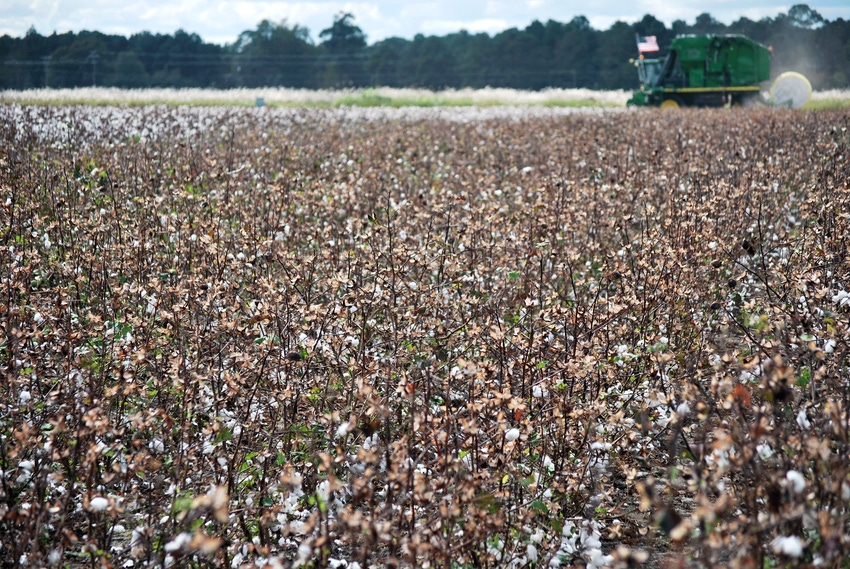October 27, 2016

“What exactly is it you do?” I am asked time and again. “I am a plant pathologist for the University of Georgia,” I say, which is met with a blank stare until I say, “That is like being a veterinarian for plants.”
In truth, “a veterinarian for plants” may not be the best description. Plant pathologists are less able to heal a single affected plant than they are to protect an entire crop. I have begun to think of my vocation as more of a “zookeeper,” which is a better moniker for corralling and containing a host of wild beasts like fungi, bacteria, nematodes and viruses. When these beasts escape, for they are truly cunning, it is my job to work with farmers, Extension agents, consultants, researchers and agricultural industry to put them back in their cages as quickly as possible.
Growers are engrossed in the urgency of harvest now, so much so that disease management considerations for the 2017 crop seem too distant to be worthy of distraction. However, harvest is an excellent time to assess the efficacy of disease and nematode management programs deployed during the season.
Harvest is a time to figure out which “cages” held diseases in check and which cages need to be repaired, or even rebuilt. Harvest gives the opportunity to assess the extent to which specific diseases and nematodes affected yield. Diseases are a constant companion to our row crops in the South. Effective management of important diseases is a critical component of production; over-management may lead to unnecessary expenses and worry. For example, a little bit of leaf spot in a peanut field, especially late in the season, will not affect yield and is not an indication of failure in a management program.
Three disease and nematode management tasks best tackled in fall:
No. 1 - Growers should assess the true impact of diseases on yields. By now, growers have been over their corn, soybean, cotton, and peanut fields many times throughout the season and symptoms of “sick” plants draw their anxious eyes like iron to a magnet. However, in many instances a grower’s gloomy predictions of losses to diseases, for example Tomato spotted wilt of peanut, are actually exaggerated. Sure, the tomato spotted wilt may cause some yield loss; however yields are often much better than expected because the disease was less severe than the grower’s weary eyes predicted.
Cotton growers may recognize bacterial blight for the first time and concern for impact of this disease is understandable. However, after visiting fields across the state, I am confident that yield losses in most fields will be small, if they occur at all. This is not to diminish the importance of tomato spotted wilt, bacterial blight, or any other disease. It is simply to say that limited disease in a field is not likely to cause much damage to an overall good crop. At harvest, growers have the opportunity to determine the true impact of disease and begin management plans for next season.
No. 2 - Identify where nematodes are a problem. Stunted plants with significant reduction in yield, often in specific areas of a field, are good indication that damaging populations of nematodes are present. (Peanut farmers may also be able to detect damage from peanut root-knot nematodes when they take samples to be “hull scraped”.) Once a grower suspects a field is impacted by nematodes, it is important to collect soil samples for analysis. Samples should be collected directly from the root zone before soil temperatures cool as winter approaches. Results from the sample will identify the type of nematode present and the size of the population. Armed with such information, the grower can make decisions for next season’s crop rotations, variety selection, need for a nematicide and even use of “site specific” strategies for protection.
No. 3 - Harvest is not too early to begin decisions for variety selections for 2017. In addition to yield, variety selection should also include consideration for disease and nematode resistance. Specifically, corn growers in the southeast should consider varieties that have resistance to northern corn leaf blight and southern corn rust. With resurgence of frogeye leaf spot this year, soybean producers should consider varieties with resistance to that disease and also root-knot nematodes. Peanut growers should consider varieties with increased resistance to Tomato spotted wilt, leaf spot diseases, white mold and root-knot nematodes.
Cotton growers should consider the benefit of root-knot nematode resistant varieties, but also varieties that have resistance to bacterial blight. Cotton farmers have basically two tactics to manage bacterial blight. One is to manage crop residue and debris; the bacteria can survive in infested debris. The second is to plant varieties that are resistant to the disease. However, this selection also requires attention to points one and two described earlier. Selecting a bacterial-blight resistant variety may mean giving up some yield potential and important traits, such as nematode resistance. Making the best cotton variety selection requires both an awareness of diseases and nematodes that affected a crop this season and an understanding of the true impact of such on yield.
Pests will always be a part of our row crop production in the Southeast; disease symptoms will occur in every field every year. The cause and severity of these symptoms will depend largely on our ability to keep the “wild beasts” corralled, even when we cannot control weather and other factors. The job of a plant pathologist/zookeeper is too them caged; if they escape, as occurs with inadequate management practices, significant losses can occur.
You May Also Like




